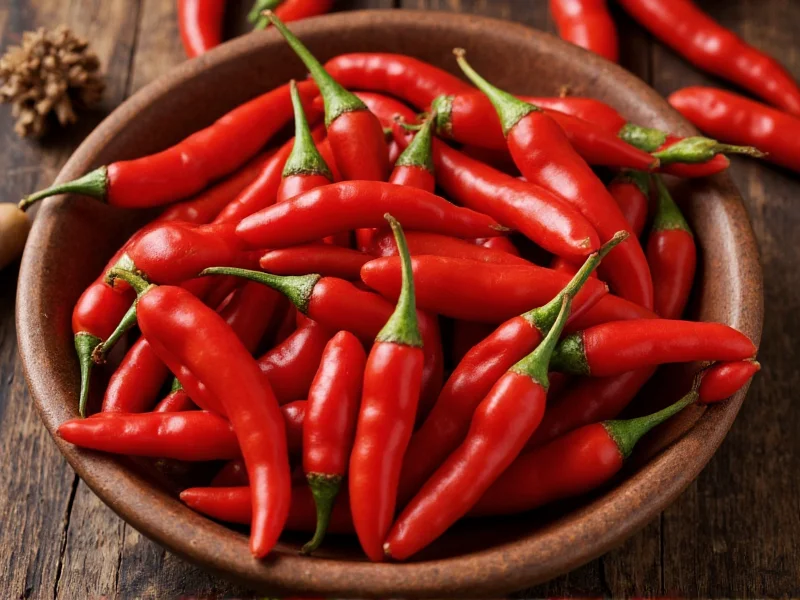When you bite into a jalapeño or habanero, that immediate heat you feel isn't actually a taste—it's a pain response triggered by capsaicin, the active component in chili peppers. Found primarily in the placenta (the white ribs inside the pepper) and to a lesser extent in the flesh, capsaicin interacts with TRPV1 receptors in your mouth that normally detect heat and physical pain.
The Chemistry of Capsaicin
Capsaicin (C18H27NO3) belongs to a family of compounds called capsaicinoids, with dihydrocapsaicin being the second most prevalent. These oily molecules are hydrophobic, which explains why water does little to alleviate chili burn—fats and dairy products like milk work better because they can dissolve the capsaicin.
The concentration of capsaicin determines a chili's heat level. Bell peppers contain zero capsaicin, while the Carolina Reaper can reach 2,200,000 Scoville Heat Units (SHU). This variation occurs because different chili varieties express the genes responsible for capsaicin production at different levels.
Why Chilies Evolved to Be Spicy
Contrary to what you might expect, capsaicin didn't evolve to deter humans. Research shows this compound primarily protects chili plants from fungal infections and mammalian predators. Interestingly, birds—which help disperse chili seeds—don't have TRPV1 receptors sensitive to capsaicin, so they can eat chilies without feeling the burn.
This evolutionary adaptation explains why wild chilies in regions with high fungal pressure tend to be spicier. The capsaicin deters mammals (who would crush the seeds while chewing) while attracting birds (who pass the seeds intact through their digestive systems).
Measuring Chili Heat: The Scoville Scale
In 1912, pharmacist Wilbur Scoville developed a method to measure chili pungency. The Scoville Organoleptic Test originally involved diluting chili extract until the heat became undetectable to human testers. Today, high-performance liquid chromatography (HPLC) provides precise measurements, though results are still converted to Scoville Heat Units for public understanding.
| Chili Variety | Scoville Heat Units | Typical Use |
|---|---|---|
| Bell Pepper | 0 SHU | Raw consumption, cooking |
| Jalapeño | 2,500–8,000 SHU | Salsas, nachos, pickling |
| Habanero | 100,000–350,000 SHU | Hot sauces, Caribbean cuisine |
| Ghost Pepper | 855,000–1,041,427 SHU | Extreme hot sauces, challenges |
| Carolina Reaper | 1,400,000–2,200,000 SHU | Record-breaking hot sauces |
Why Humans Enjoy Spicy Food
The paradox of why humans seek out painful spicy experiences has fascinated researchers. When capsaicin triggers pain receptors, your body releases endorphins—natural opioids that create a sense of pleasure. This "benign masochism" explains why many people develop a tolerance and even craving for spicy foods.
Cultural factors also play a significant role. In regions with hot climates, spicy foods may have provided evolutionary advantages by reducing foodborne illnesses—capsaicin has antimicrobial properties that help preserve food in tropical environments.
Practical Applications of Capsaicin
Beyond culinary uses, capsaicin has several practical applications. It's the active ingredient in pepper spray for personal defense and wildlife deterrents. Medical researchers study its potential for pain management, with topical capsaicin creams used to treat conditions like arthritis and neuropathy.
Understanding what makes chili spicy reveals nature's remarkable chemical defenses and humanity's unique relationship with pain and pleasure. Whether you're a casual spice user or a hot sauce enthusiast, appreciating the science behind the burn enhances your culinary experience.











 浙公网安备
33010002000092号
浙公网安备
33010002000092号 浙B2-20120091-4
浙B2-20120091-4